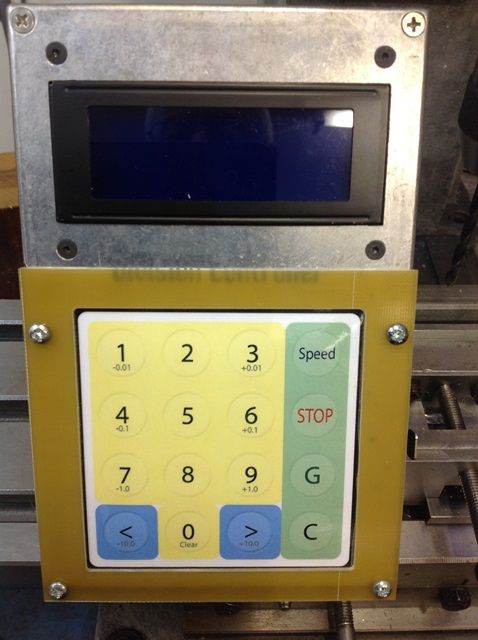Hello David.
Forgive the length of this post, but it needs doing!
Ok, lets see if we can get closer to the issue…
Since the Dividing head went 360deg ( plus a smidgeon) when you indexed 96 teeth for the full 360 degree circumference, the motor is stepping for all intents the correct number of steps, ie, 400 steps per rotor rev. This also means that your software seems to be sending 400 step pulses for one rotor rev. I would expect the software Creator did this with intent, since most of the inexpensive stepper drivers have 400steps/rev as their lowest setting ( as yours does).
Anyway, if the problem lay in that direction, it would be very obvious – the dividing would be in error by half a rotation!
That said, just to get some numbers down:
Your total gear ratio is 1:180. So one 360 deg rotation of the table will require 180 Stepper rotations, which is 180*400steps/rev = 72000 step pulses from the software for one Table rotation.
For your 96 tooth setup:
One tooth is a table rotation of 3.75deg. This gives a stepper rotation of 3.75*180 ( the gear ratio) = 675 deg.
So for every tooth indexed, the stepper must rotate 675 degrees, or 750 steps…
For all that diatribe…The stepper 'STEP' ratio to Table tooth index is 750 steps per tooth ( for the 96 tooth example), and an accumulative error of say one motor step per tooth indexed (751 step pulses instead of 750..) would give 72096 step pulses for one table rotation. That equates to (72096/400) = 180.24 stepper rotations in stead of 180 rotations per one table rotation.
The actual error in tooth is then 180.24/180 ( the gear ratio..again..) = 1.0013333 table rotations instead of one rotation – That is an error of 0.48 degrees at the last tooth position. This is not insignificant, as your tooth index is 3.75 deg. the error is nearly 8% or so. However, you indicate a half tooth error – or closer to 2degrees..closer to a 50% error..
Basically, in order to quantitatively determine if there is an accumulative pulse error in the sequence you need to be able to measure the (small) error at the end of the index sequence. All my gaff above was really to try show that the error has nothing to do with the stepper driver, or the steps/rev setting for your motor. Any error there would be large. A cumulative error of 1 or 2 step pulses per tooth index sequence would cause a problem though..
This leaves a few possibilities. Either the software is not computing the pulse count correctly ( not using floating point, rounding errors, etc), or there is electrical noise which is being seen as indiscriminate pulses. The latter is unlikely due to the OPTO input to the stepper, but still possible if your ground connections are not sound. Backlash may also be a problem, but I assume you take care of that by taking up any backlash in the gears before you start indexing?
In order to try eliminate some of these , could you do these tests : Note that you should try be as accurate as possible in determining the last tooth stop position each time.
Setup the indexer to do the following number of teeth per 360deg rotation –
60 teeth, then 120 teeth, then 70 teeth, and last, 150 teeth.
For each one, setup, take out any backlash in the direction of rotation, mark carefully the start and then index all the way round till the last tooth, and note the error. THEN, zero the setup again ( to your original start mark) and REPEAT that test again( remembering to eliminate backlash..), and when done repeat once more ( do each set thrice..). Note the error each time, and especially, note if the error is the SAME each time round for that tooth count.
What this should show:
If there is error, and the error is the same within a sequence of 3, then it is not random electrical noise causing inadvertent step pulses, but probably due to the software.
If the error differs each time for each of the three tests of the same tooth count, then the driver is seeing pulses that are not being generated by the Software – possibly due to grounding of the driver motor supply ,or grounding of the PC relative to the Stepper supply, or relative to the Index table/lathe, etc.
If the 60 tooth and 120 tooth tests show no error, or VERY SMALL error, while the 70 and 150 tooth tests have noticeable errors, then it possibly a software rounding problem..
NOTE: try to ensure the same test conditions each time – ie, repeat each sequence with the same process each time – lathe power on sequence, etc. If it is electrical noise, you should try to ensure the same noise generator ( the lathe, whatever) is powered at the same place in the sequence, etc.
Again, forgive the long post, but it can be tricky to find problems that are seemingly this subtle. Hope I have not chased you away…
Joe
Edited By Joseph Noci 1 on 13/04/2018 15:20:43
Hnclad.










